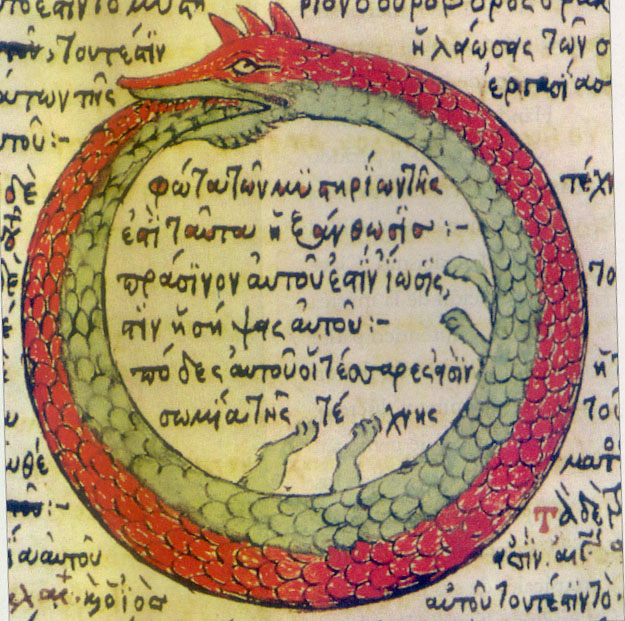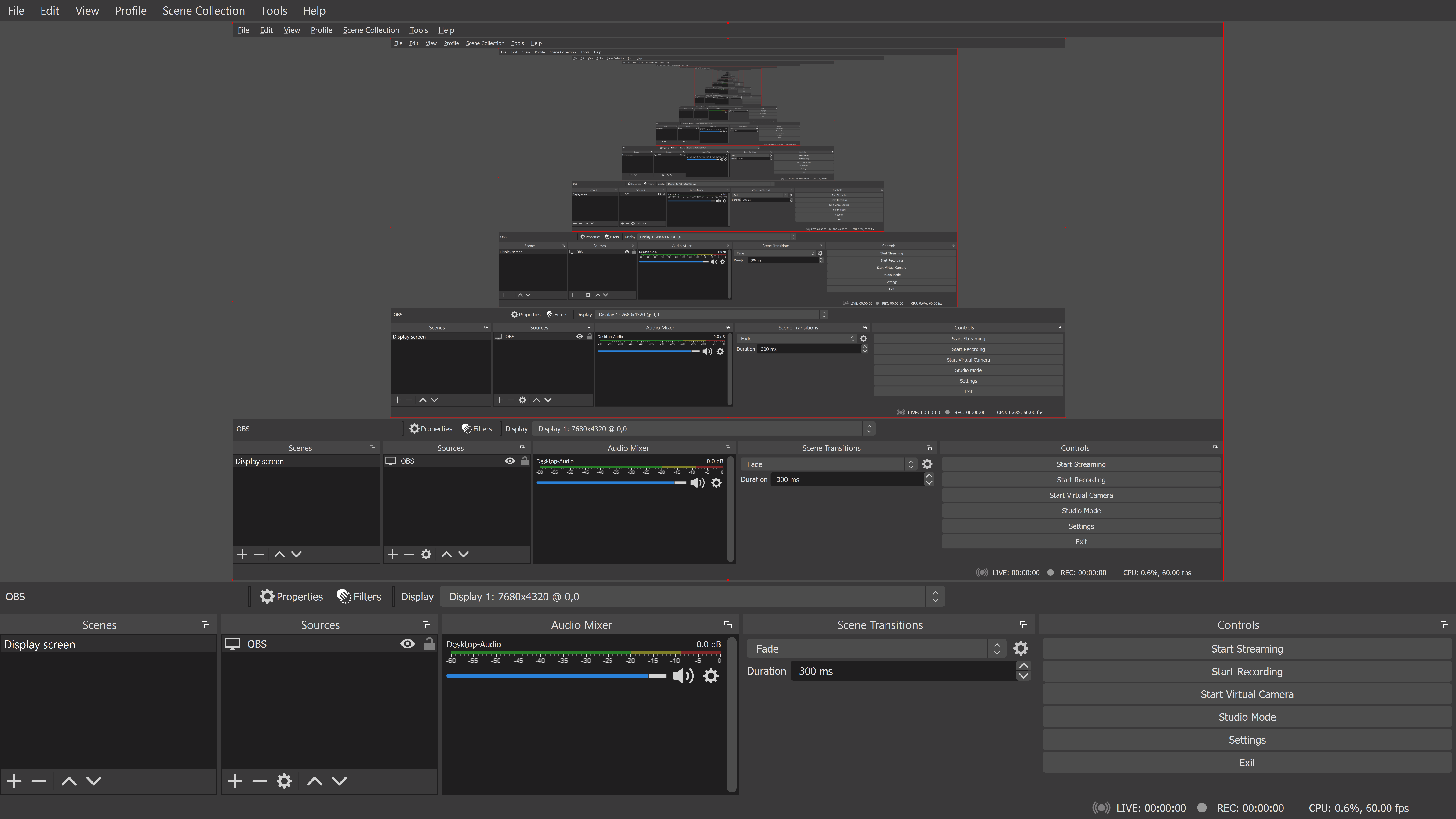|
Recursion
Recursion occurs when the definition of a concept or process depends on a simpler or previous version of itself. Recursion is used in a variety of disciplines ranging from linguistics to logic. The most common application of recursion is in mathematics and computer science, where a function (mathematics), function being defined is applied within its own definition. While this apparently defines an infinite number of instances (function values), it is often done in such a way that no infinite loop or infinite chain of references can occur. A process that exhibits recursion is ''recursive''. Video feedback displays recursive images, as does an infinity mirror. Formal definitions In mathematics and computer science, a class of objects or methods exhibits recursive behavior when it can be defined by two properties: * A simple ''base case'' (or cases) — a terminating scenario that does not use recursion to produce an answer * A ''recursive step'' — a set of rules that reduce ... [...More Info...] [...Related Items...] OR: [Wikipedia] [Google] [Baidu] [Amazon] |
Recurrence Relation
In mathematics, a recurrence relation is an equation according to which the nth term of a sequence of numbers is equal to some combination of the previous terms. Often, only k previous terms of the sequence appear in the equation, for a parameter k that is independent of n; this number k is called the ''order'' of the relation. If the values of the first k numbers in the sequence have been given, the rest of the sequence can be calculated by repeatedly applying the equation. In ''linear recurrences'', the th term is equated to a linear function of the k previous terms. A famous example is the recurrence for the Fibonacci numbers, F_n=F_+F_ where the order k is two and the linear function merely adds the two previous terms. This example is a linear recurrence with constant coefficients, because the coefficients of the linear function (1 and 1) are constants that do not depend on n. For these recurrences, one can express the general term of the sequence as a closed-form expression o ... [...More Info...] [...Related Items...] OR: [Wikipedia] [Google] [Baidu] [Amazon] |
Self-reference
Self-reference is a concept that involves referring to oneself or one's own attributes, characteristics, or actions. It can occur in language, logic, mathematics, philosophy, and other fields. In natural or formal languages, self-reference occurs when a sentence, idea or formula refers to itself. The reference may be expressed either directly—through some intermediate sentence or formula—or by means of some encoding. In philosophy, self-reference also refers to the ability of a subject to speak of or refer to itself, that is, to have the kind of thought expressed by the first person nominative singular pronoun "I" in English. Self-reference is studied and has applications in mathematics, philosophy, computer programming, second-order cybernetics, and linguistics, as well as in humor. Self-referential statements are sometimes paradoxical, and can also be considered recursive. In logic, mathematics and computing In classical philosophy, paradoxes were created b ... [...More Info...] [...Related Items...] OR: [Wikipedia] [Google] [Baidu] [Amazon] |
Infinite Regress
Infinite regress is a philosophical concept to describe a series of entities. Each entity in the series depends on its predecessor, following a recursive principle. For example, the epistemic regress is a series of beliefs in which the justification of each belief depends on the justification of the belief that comes before it. An infinite regress argument is an argument against a theory based on the fact that this theory leads to an infinite regress. For such an argument to be successful, it must demonstrate not just that the theory in question entails an infinite regress but also that this regress is ''vicious''. There are different ways in which a regress can be vicious. The most serious form of viciousness involves a contradiction in the form of ''metaphysical impossibility''. Other forms occur when the infinite regress is responsible for the theory in question being implausible or for its failure to solve the problem it was formulated to solve. Traditionally, it was of ... [...More Info...] [...Related Items...] OR: [Wikipedia] [Google] [Baidu] [Amazon] |
Pirahã Language
Pirahã (also spelled ''Pirahá, Pirahán''), or Múra-Pirahã, is the indigenous language of the Pirahã people of Amazonas, Brazil. The Pirahã live along the Maici River, a tributary of the Amazon River. Pirahã is the only surviving dialect of the Mura language; all others having died out in the last few centuries as most groups of the Mura people have shifted to Portuguese. Due to this, Pirahã can be considered its own language now, as no other Mura dialects have survived. Suspected relatives, such as Matanawi, are also extinct. Pirahã is estimated to have between 250 and 380 speakers. It is not in immediate danger of extinction, as its use is vigorous and the Pirahã community is mostly monolingual. The Pirahã language is the subject of various controversial claims; for example, that it provides evidence against linguistic relativity. The controversy is compounded by the difficulty of learning the language; the number of linguists with field experience in Pirah� ... [...More Info...] [...Related Items...] OR: [Wikipedia] [Google] [Baidu] [Amazon] |
Daniel Everett
Daniel Leonard Everett (born July 26, 1951) is an American linguist and author best known for his study of the Amazon basin's Pirahã people and their language. Everett is currently Trustee Professor of Cognitive Sciences at Bentley University in Waltham, Massachusetts. From July 1, 2010, to June 30, 2018, Everett served as Dean of Arts and Sciences at Bentley. Prior to Bentley University, Everett was chair of the Department of Languages, Literatures and Cultures at Illinois State University in Normal, Illinois. He has taught at the University of Manchester and is former chair of the Linguistics Department of the University of Pittsburgh. Some of his claims about the Pirahã language have beecontested by other linguists. Early life Everett was raised near the Mexican border in Holtville, California. His father was an occasional cowboy, mechanic, and construction worker. His mother was a waitress at a local restaurant. Everett played in rock bands from the time he was 11 yea ... [...More Info...] [...Related Items...] OR: [Wikipedia] [Google] [Baidu] [Amazon] |
Factorial
In mathematics, the factorial of a non-negative denoted is the Product (mathematics), product of all positive integers less than or equal The factorial also equals the product of n with the next smaller factorial: \begin n! &= n \times (n-1) \times (n-2) \times (n-3) \times \cdots \times 3 \times 2 \times 1 \\ &= n\times(n-1)!\\ \end For example, 5! = 5\times 4! = 5 \times 4 \times 3 \times 2 \times 1 = 120. The value of 0! is 1, according to the convention for an empty product. Factorials have been discovered in several ancient cultures, notably in Indian mathematics in the canonical works of Jain literature, and by Jewish mystics in the Talmudic book ''Sefer Yetzirah''. The factorial operation is encountered in many areas of mathematics, notably in combinatorics, where its most basic use counts the possible distinct sequences – the permutations – of n distinct objects: there In mathematical analysis, factorials are used in power series for the ex ... [...More Info...] [...Related Items...] OR: [Wikipedia] [Google] [Baidu] [Amazon] |
Circular Definition
A circular definition is a type of definition that uses the term(s) being defined as part of the description or assumes that the term(s) being described are already known. There are several kinds of circular definition, and several ways of characterising the term: pragmatic, lexicographic and linguistic Linguistics is the scientific study of language. The areas of linguistic analysis are syntax (rules governing the structure of sentences), semantics (meaning), Morphology (linguistics), morphology (structure of words), phonetics (speech sounds .... Circular definitions are related to circular reasoning in that they both involve a self-referential approach. Circular definitions may be unhelpful if the audience must either already know the meaning of the key term, or if the term to be defined is used in the definition itself. In linguistics, a circular definition is a description of the meaning of a lexeme that is constructed using one or more synonymous lexemes that are al ... [...More Info...] [...Related Items...] OR: [Wikipedia] [Google] [Baidu] [Amazon] |
Recursive Grammar
In computer science, a grammar is informally called a recursive grammar if it contains production rules that are recursive, meaning that expanding a non-terminal according to these rules can eventually lead to a string that includes the same non-terminal again. Otherwise it is called a non-recursive grammar.. For example, a grammar for a context-free language is left recursive if there exists a non-terminal symbol ''A'' that can be put through the production rules to produce a string with ''A'' (as the leftmost symbol). All types of grammars in the Chomsky hierarchy can be recursive and it is recursion that allows the production of infinite sets of words. Properties A non-recursive grammar can produce only a finite language; and each finite language can be produced by a non-recursive grammar. For example, a straight-line grammar produces just a single word. A recursive context-free grammar that contains no useless rules necessarily produces an infinite language. This proper ... [...More Info...] [...Related Items...] OR: [Wikipedia] [Google] [Baidu] [Amazon] |
Video Feedback
Video feedback is the process that starts and continues when a video camera is pointed at its own playback video monitor. The loop delay from camera to display back to camera is at least one video frame time, due to the input and output scanning processes; it can be more if there is more processing in the loop. History First discovered shortly after Charlie Ginsburg invented the first video recorder for Ampex in 1956, video feedback was considered a nuisance and unwanted noise. Technicians and studio camera operators were chastised for allowing a video camera to see its own monitor as the overload of self-amplified video signal caused significant problems with the 1950s video pickup, often ruining the pickup. It could also cause screen burn-in on television screens and monitors of the time as well, by generating static brightly illuminated display patterns. In the 1960s early examples of video feedback art became introduced into the psychedelic art scene in New York City. Nam J ... [...More Info...] [...Related Items...] OR: [Wikipedia] [Google] [Baidu] [Amazon] |
Infinity Mirror
The infinity mirror (also sometimes called an infinite mirror) is a configuration of two or more Parallel (geometry), parallel or angled mirrors, which are arranged to create a series of further and further reflections that appear to recede to infinity. The front mirror of an infinity mirror is often half-silvered (a so-called one way mirror), but this is not required to produce the effect. A similar appearance in artworks has been called the Droste effect. Infinity mirrors are sometimes used as interior decoration, room accents or in works of art. Description In a classic self-contained infinity mirror, a set of light bulbs, Light-emitting diode, LEDs, or other point-source lights are placed around the periphery of a fully reflective mirror, and a second, partially reflective "one-way mirror" is placed a short distance in front of it, in a parallel alignment. When an outside observer looks into the surface of the partially reflective mirror, the lights appear to recede into infi ... [...More Info...] [...Related Items...] OR: [Wikipedia] [Google] [Baidu] [Amazon] |
Fibonacci Sequence
In mathematics, the Fibonacci sequence is a Integer sequence, sequence in which each element is the sum of the two elements that precede it. Numbers that are part of the Fibonacci sequence are known as Fibonacci numbers, commonly denoted . Many writers begin the sequence with 0 and 1, although some authors start it from 1 and 1 and some (as did Fibonacci) from 1 and 2. Starting from 0 and 1, the sequence begins : 0, 1, 1, 2, 3, 5, 8, 13, 21, 34, 55, 89, 144, ... The Fibonacci numbers were first described in Indian mathematics as early as 200 BC in work by Pingala on enumerating possible patterns of Sanskrit poetry formed from syllables of two lengths. They are named after the Italian mathematician Leonardo of Pisa, also known as Fibonacci, who introduced the sequence to Western European mathematics in his 1202 book . Fibonacci numbers appear unexpectedly often in mathematics, so much so that there is an entire journal dedicated to their study, the ''Fibonacci Quarterly''. Appli ... [...More Info...] [...Related Items...] OR: [Wikipedia] [Google] [Baidu] [Amazon] |



